python进行数据分析:数据预处理
六大数据类型 见python基本功
import numpy as np
import pandas as pd
数据预处理
缺失值处理
float_data = pd.Series([1.2, -3.5, np.nan, 0])
float_data
0 1.2
1 -3.5
2 NaN
3 0.0
dtype: float64
查看缺失值
float_data.isna()
0 False
1 False
2 True
3 False
dtype: bool
string_data = pd.Series(["aardvark", np.nan, None, "avocado"])
string_data
string_data.isna()
float_data = pd.Series([1, 2, None], dtype='float64')
float_data
float_data.isna()
0 False
1 False
2 True
dtype: bool
删除缺失值
data = pd.Series([1, np.nan, 3.5, np.nan, 7])
data.dropna()
0 1.0
2 3.5
4 7.0
dtype: float64
data[data.notna()]
0 1.0
2 3.5
4 7.0
dtype: float64
data = pd.DataFrame([[1., 6.5, 3.], [1., np.nan, np.nan], [np.nan, np.nan, np.nan], [np.nan, 6.5, 3.]])
print(data)
data.dropna()
0 1 2
0 1.0 6.5 3.0
1 1.0 NaN NaN
2 NaN NaN NaN
3 NaN 6.5 3.0
|
| 0 | 1 | 2 |
| — | — | — | — |
| 0 | 1.0 | 6.5 | 3.0 |
data.dropna(how="all")##删除行全部都是缺失值
|
| 0 | 1 | 2 |
| — | — | — | — |
| 0 | 1.0 | 6.5 | 3.0 |
| 1 | 1.0 | NaN | NaN |
| 3 | NaN | 6.5 | 3.0 |
data[4] = np.nan
data
data.dropna(axis="columns", how="all")##删除列全部都是缺失值
|
| 0 | 1 | 2 |
| — | — | — | — |
| 0 | 1.0 | 6.5 | 3.0 |
| 1 | 1.0 | NaN | NaN |
| 2 | NaN | NaN | NaN |
| 3 | NaN | 6.5 | 3.0 |
df = pd.DataFrame(np.random.standard_normal((7, 3)))
df.iloc[:4, 1] = np.nan
df.iloc[:2, 2] = np.nan
print(df)
df.dropna()#删除含缺失值的行
0 1 2
0 0.476985 NaN NaN
1 -0.577087 NaN NaN
2 0.523772 NaN 1.343810
3 -0.713544 NaN -2.370232
4 -1.860761 -0.860757 0.560145
5 -1.265934 0.119827 -1.063512
6 0.332883 -2.359419 -0.199543
|
| 0 | 1 | 2 |
| — | — | — | — |
| 4 | -1.860761 | -0.860757 | 0.560145 |
| 5 | -1.265934 | 0.119827 | -1.063512 |
| 6 | 0.332883 | -2.359419 | -0.199543 |
df.dropna(thresh=2)# 删除至少有两个缺失值的行
|
| 0 | 1 | 2 |
| — | — | — | — |
| 2 | 0.523772 | NaN | 1.343810 |
| 3 | -0.713544 | NaN | -2.370232 |
| 4 | -1.860761 | -0.860757 | 0.560145 |
| 5 | -1.265934 | 0.119827 | -1.063512 |
| 6 | 0.332883 | -2.359419 | -0.199543 |
缺失值填充
df.fillna(0)##缺失值填充为0
|
| 0 | 1 | 2 |
| — | — | — | — |
| 0 | 0.476985 | 0.000000 | 0.000000 |
| 1 | -0.577087 | 0.000000 | 0.000000 |
| 2 | 0.523772 | 0.000000 | 1.343810 |
| 3 | -0.713544 | 0.000000 | -2.370232 |
| 4 | -1.860761 | -0.860757 | 0.560145 |
| 5 | -1.265934 | 0.119827 | -1.063512 |
| 6 | 0.332883 | -2.359419 | -0.199543 |
df.fillna({1: 0.5, 2: 0})#不同列填充不同缺失值
|
| 0 | 1 | 2 |
| — | — | — | — |
| 0 | 0.476985 | 0.500000 | 0.000000 |
| 1 | -0.577087 | 0.500000 | 0.000000 |
| 2 | 0.523772 | 0.500000 | 1.343810 |
| 3 | -0.713544 | 0.500000 | -2.370232 |
| 4 | -1.860761 | -0.860757 | 0.560145 |
| 5 | -1.265934 | 0.119827 | -1.063512 |
| 6 | 0.332883 | -2.359419 | -0.199543 |
df = pd.DataFrame(np.random.standard_normal((6, 3)))
df.iloc[2:, 1] = np.nan
df.iloc[4:, 2] = np.nan
df
|
| 0 | 1 | 2 |
| — | — | — | — |
| 0 | -1.541996 | -0.970736 | -1.307030 |
| 1 | 0.286350 | 0.377984 | -0.753887 |
| 2 | 0.331286 | NaN | 0.069877 |
| 3 | 0.246674 | NaN | 1.004812 |
| 4 | 1.327195 | NaN | NaN |
| 5 | 0.022185 | NaN | NaN |
df.fillna(method="ffill")#向下填充
|
| 0 | 1 | 2 |
| — | — | — | — |
| 0 | -1.541996 | -0.970736 | -1.307030 |
| 1 | 0.286350 | 0.377984 | -0.753887 |
| 2 | 0.331286 | 0.377984 | 0.069877 |
| 3 | 0.246674 | 0.377984 | 1.004812 |
| 4 | 1.327195 | 0.377984 | 1.004812 |
| 5 | 0.022185 | 0.377984 | 1.004812 |
df.fillna(method="ffill", limit=2)#向下填充,限制填充数量=2
|
| 0 | 1 | 2 |
| — | — | — | — |
| 0 | -1.541996 | -0.970736 | -1.307030 |
| 1 | 0.286350 | 0.377984 | -0.753887 |
| 2 | 0.331286 | 0.377984 | 0.069877 |
| 3 | 0.246674 | 0.377984 | 1.004812 |
| 4 | 1.327195 | NaN | 1.004812 |
| 5 | 0.022185 | NaN | 1.004812 |
data = pd.Series([1., np.nan, 3.5, np.nan, 7])
data.fillna(data.mean())#以平均值填充
0 1.000000
1 3.833333
2 3.500000
3 3.833333
4 7.000000
dtype: float64
重复值处理
data = pd.DataFrame({"k1": ["one", "two"] * 3 + ["two"], "k2": [1, 1, 2, 3, 3, 4, 4]})
data
|
| k1 | k2 |
| — | — | — |
| 0 | one | 1 |
| 1 | two | 1 |
| 2 | one | 2 |
| 3 | two | 3 |
| 4 | one | 3 |
| 5 | two | 4 |
| 6 | two | 4 |
查看是否存在重复值
data.duplicated()
0 False
1 False
2 False
3 False
4 False
5 False
6 True
dtype: bool
删除重复值
data.drop_duplicates()
|
| k1 | k2 |
| — | — | — |
| 0 | one | 1 |
| 1 | two | 1 |
| 2 | one | 2 |
| 3 | two | 3 |
| 4 | one | 3 |
| 5 | two | 4 |
data["v1"] = range(7)
data
|
| k1 | k2 | v1 |
| — | — | — | — |
| 0 | one | 1 | 0 |
| 1 | two | 1 | 1 |
| 2 | one | 2 | 2 |
| 3 | two | 3 | 3 |
| 4 | one | 3 | 4 |
| 5 | two | 4 | 5 |
| 6 | two | 4 | 6 |
data.drop_duplicates(subset=["k1"])#只要k1列有重复值就去重,保留第一行
|
| k1 | k2 | v1 |
| — | — | — | — |
| 0 | one | 1 | 0 |
| 1 | two | 1 | 1 |
data.drop_duplicates(["k1", "k2"], keep="last")#只要k1&k2有重复值就去重,保留最后一行
|
| k1 | k2 | v1 |
| — | — | — | — |
| 0 | one | 1 | 0 |
| 1 | two | 1 | 1 |
| 2 | one | 2 | 2 |
| 3 | two | 3 | 3 |
| 4 | one | 3 | 4 |
| 6 | two | 4 | 6 |
函数映射
data = pd.DataFrame({"food": ["bacon", "pulled pork", "bacon", "pastrami", "corned beef", "bacon", "pastrami", "honey ham", "nova lox"], "ounces": [4, 3, 12, 6, 7.5, 8, 3, 5, 6]})
data
|
| food | ounces |
| — | — | — |
| 0 | bacon | 4.0 |
| 1 | pulled pork | 3.0 |
| 2 | bacon | 12.0 |
| 3 | pastrami | 6.0 |
| 4 | corned beef | 7.5 |
| 5 | bacon | 8.0 |
| 6 | pastrami | 3.0 |
| 7 | honey ham | 5.0 |
| 8 | nova lox | 6.0 |
map()将字典中的key映射为value
meat_to_animal = { "bacon": "pig", "pulled pork": "pig", "pastrami": "cow", "corned beef": "cow", "honey ham": "pig", "nova lox": "salmon"
}
data["animal"] = data["food"].map(meat_to_animal)
data
|
| food | ounces | animal |
| — | — | — | — |
| 0 | bacon | 4.0 | pig |
| 1 | pulled pork | 3.0 | pig |
| 2 | bacon | 12.0 | pig |
| 3 | pastrami | 6.0 | cow |
| 4 | corned beef | 7.5 | cow |
| 5 | bacon | 8.0 | pig |
| 6 | pastrami | 3.0 | cow |
| 7 | honey ham | 5.0 | pig |
| 8 | nova lox | 6.0 | salmon |
def get_animal(x): return meat_to_animal[x]
data["food"].map(get_animal)
0 pig
1 pig
2 pig
3 cow
4 cow
5 pig
6 cow
7 pig
8 salmon
Name: food, dtype: object
替换
data = pd.Series([1., -999., 2., -999., -1000., 3.])
data
0 1.0
1 -999.0
2 2.0
3 -999.0
4 -1000.0
5 3.0
dtype: float64
单值替换
data.replace(-999, np.nan)#将-999替换为缺失值
0 1.0
1 NaN
2 2.0
3 NaN
4 -1000.0
5 3.0
dtype: float64
多值替换
data.replace([-999, -1000], np.nan)#将-999&-1000替换为缺失值
0 1.0
1 NaN
2 2.0
3 NaN
4 NaN
5 3.0
dtype: float64
data.replace([-999, -1000], [np.nan, 0])#将-999替换为缺失值,-1000替换为0
0 1.0
1 NaN
2 2.0
3 NaN
4 0.0
5 3.0
dtype: float64
data.replace({-999: np.nan, -1000: 0})#将-999替换为缺失值,-1000替换为0
0 1.0
1 NaN
2 2.0
3 NaN
4 0.0
5 3.0
dtype: float64
data = pd.DataFrame(np.arange(12).reshape((3, 4)), index=["Ohio", "Colorado", "New York"], columns=["one", "two", "three", "four"])
def transform(x): return x[:4].upper() data.index.map(transform)
Index(['OHIO', 'COLO', 'NEW '], dtype='object')
data.index = data.index.map(transform)
data
|
| one | two | three | four |
| — | — | — | — | — |
| OHIO | 0 | 1 | 2 | 3 |
| COLO | 4 | 5 | 6 | 7 |
| NEW | 8 | 9 | 10 | 11 |
重命名rename
data.rename(index=str.title, columns=str.upper)
|
| ONE | TWO | THREE | FOUR |
| — | — | — | — | — |
| Ohio | 0 | 1 | 2 | 3 |
| Colo | 4 | 5 | 6 | 7 |
| New | 8 | 9 | 10 | 11 |
data.rename(index={"OHIO": "INDIANA"}, columns={"three": "peekaboo"})
|
| one | two | peekaboo | four |
| — | — | — | — | — |
| INDIANA | 0 | 1 | 2 | 3 |
| COLO | 4 | 5 | 6 | 7 |
| NEW | 8 | 9 | 10 | 11 |
数据分箱pd.cut&pd.qcut
-
• pd.cut() 将指定序列 x,按指定数量等间距的划分(根据值本身而不是这些值的频率选择均匀分布的bins),或按照指定间距划分
-
• pd.qcut() 将指定序列 x,划分为 q 个区间,使落在每个区间的记录数一致
ages = [20, 22, 25, 27, 21, 23, 37, 31, 61, 45, 41, 32]
bins = [18, 25, 35, 60, 100]
age_categories = pd.cut(ages, bins)
age_categories
[(18, 25], (18, 25], (18, 25], (25, 35], (18, 25], ..., (25, 35], (60, 100], (35, 60], (35, 60], (25, 35]]
Length: 12
Categories (4, interval[int64, right]): [(18, 25] < (25, 35] < (35, 60] < (60, 100]]
age_categories.codes
age_categories.categories
age_categories.categories[0]
pd.value_counts(age_categories)
(18, 25] 5
(25, 35] 3
(35, 60] 3
(60, 100] 1
dtype: int64
pd.cut(ages, bins, right=False)
[[18, 25), [18, 25), [25, 35), [25, 35), [18, 25), ..., [25, 35), [60, 100), [35, 60), [35, 60), [25, 35)]
Length: 12
Categories (4, interval[int64, left]): [[18, 25) < [25, 35) < [35, 60) < [60, 100)]
group_names = ["Youth", "YoungAdult", "MiddleAged", "Senior"]
pd.cut(ages, bins, labels=group_names)
['Youth', 'Youth', 'Youth', 'YoungAdult', 'Youth', ..., 'YoungAdult', 'Senior', 'MiddleAged', 'MiddleAged', 'YoungAdult']
Length: 12
Categories (4, object): ['Youth' < 'YoungAdult' < 'MiddleAged' < 'Senior']
data = np.random.uniform(size=20)
pd.cut(data, 4, precision=2)
[(0.32, 0.53], (0.74, 0.95], (0.74, 0.95], (0.53, 0.74], (0.11, 0.32], ..., (0.74, 0.95], (0.11, 0.32], (0.74, 0.95], (0.32, 0.53], (0.74, 0.95]]
Length: 20
Categories (4, interval[float64, right]): [(0.11, 0.32] < (0.32, 0.53] < (0.53, 0.74] < (0.74, 0.95]]
data = np.random.standard_normal(1000)
quartiles = pd.qcut(data, 4, precision=2)
quartiles
pd.value_counts(quartiles)
(-2.96, -0.69] 250
(-0.69, -0.032] 250
(-0.032, 0.61] 250
(0.61, 3.93] 250
dtype: int64
pd.qcut(data, [0, 0.1, 0.5, 0.9, 1.]).value_counts()
(-2.9499999999999997, -1.187] 100
(-1.187, -0.0321] 400
(-0.0321, 1.287] 400
(1.287, 3.928] 100
dtype: int64
data = pd.DataFrame(np.random.standard_normal((1000, 4)))
data.describe()
|
| 0 | 1 | 2 | 3 |
| — | — | — | — | — |
| count | 1000.000000 | 1000.000000 | 1000.000000 | 1000.000000 |
| mean | -0.047439 | 0.046069 | 0.024366 | -0.006350 |
| std | 0.997187 | 0.998359 | 1.008925 | 0.993665 |
| min | -3.428254 | -3.645860 | -3.184377 | -3.745356 |
| 25% | -0.743886 | -0.599807 | -0.612162 | -0.697084 |
| 50% | -0.086309 | 0.043663 | -0.013609 | -0.026381 |
| 75% | 0.624413 | 0.746527 | 0.690847 | 0.694459 |
| max | 3.366626 | 2.653656 | 3.525865 | 2.735527 |
col = data[2]
col[col.abs() > 3]
55 3.260383
230 -3.056990
317 -3.184377
777 3.525865
Name: 2, dtype: float64
data[(data.abs() > 3).any(axis="columns")]
|
| 0 | 1 | 2 | 3 |
| — | — | — | — | — |
| 36 | -2.315555 | 0.457246 | -0.025907 | -3.399312 |
| 55 | 0.050188 | 1.951312 | 3.260383 | 0.963301 |
| 131 | 0.146326 | 0.508391 | -0.196713 | -3.745356 |
| 230 | -0.293333 | -0.242459 | -3.056990 | 1.918403 |
| 254 | -3.428254 | -0.296336 | -0.439938 | -0.867165 |
| 317 | 0.275144 | 1.179227 | -3.184377 | 1.369891 |
| 539 | -0.362528 | -3.548824 | 1.553205 | -2.186301 |
| 631 | 3.366626 | -2.372214 | 0.851010 | 1.332846 |
| 777 | -0.658090 | -0.207434 | 3.525865 | 0.283070 |
| 798 | 0.599947 | -3.645860 | 0.255475 | -0.549574 |
data[data.abs() > 3] = np.sign(data) * 3
data.describe()
|
| 0 | 1 | 2 | 3 |
| — | — | — | — | — |
| count | 1000.000000 | 1000.000000 | 1000.000000 | 1000.000000 |
| mean | -0.047378 | 0.047263 | 0.023821 | -0.005206 |
| std | 0.994634 | 0.994342 | 1.005685 | 0.989845 |
| min | -3.000000 | -3.000000 | -3.000000 | -3.000000 |
| 25% | -0.743886 | -0.599807 | -0.612162 | -0.697084 |
| 50% | -0.086309 | 0.043663 | -0.013609 | -0.026381 |
| 75% | 0.624413 | 0.746527 | 0.690847 | 0.694459 |
| max | 3.000000 | 2.653656 | 3.000000 | 2.735527 |
np.sign(data).head()
|
| 0 | 1 | 2 | 3 |
| — | — | — | — | — |
| 0 | -1.0 | 1.0 | -1.0 | 1.0 |
| 1 | -1.0 | 1.0 | -1.0 | 1.0 |
| 2 | -1.0 | -1.0 | -1.0 | -1.0 |
| 3 | -1.0 | 1.0 | 1.0 | -1.0 |
| 4 | 1.0 | 1.0 | 1.0 | -1.0 |
随机重排列
df = pd.DataFrame(np.arange(5 * 7).reshape((5, 7)))
df
sampler = np.random.permutation(5)#permutation:产生0到n-1的所有整数的随机排列
sampler
array([2, 4, 3, 0, 1])
df.take(sampler)#行随机排列
|
| 0 | 1 | 2 | 3 | 4 | 5 | 6 |
| — | — | — | — | — | — | — | — |
| 2 | 14 | 15 | 16 | 17 | 18 | 19 | 20 |
| 4 | 28 | 29 | 30 | 31 | 32 | 33 | 34 |
| 3 | 21 | 22 | 23 | 24 | 25 | 26 | 27 |
| 0 | 0 | 1 | 2 | 3 | 4 | 5 | 6 |
| 1 | 7 | 8 | 9 | 10 | 11 | 12 | 13 |
df.iloc[sampler]
|
| 0 | 1 | 2 | 3 | 4 | 5 | 6 |
| — | — | — | — | — | — | — | — |
| 2 | 14 | 15 | 16 | 17 | 18 | 19 | 20 |
| 4 | 28 | 29 | 30 | 31 | 32 | 33 | 34 |
| 3 | 21 | 22 | 23 | 24 | 25 | 26 | 27 |
| 0 | 0 | 1 | 2 | 3 | 4 | 5 | 6 |
| 1 | 7 | 8 | 9 | 10 | 11 | 12 | 13 |
column_sampler = np.random.permutation(7)
column_sampler
df.take(column_sampler, axis="columns")#列随机排列
|
| 6 | 2 | 1 | 3 | 4 | 0 | 5 |
| — | — | — | — | — | — | — | — |
| 0 | 6 | 2 | 1 | 3 | 4 | 0 | 5 |
| 1 | 13 | 9 | 8 | 10 | 11 | 7 | 12 |
| 2 | 20 | 16 | 15 | 17 | 18 | 14 | 19 |
| 3 | 27 | 23 | 22 | 24 | 25 | 21 | 26 |
| 4 | 34 | 30 | 29 | 31 | 32 | 28 | 33 |
随机采样
df.sample(n=3)# n指定采样的个数
|
| 0 | 1 | 2 | 3 | 4 | 5 | 6 |
| — | — | — | — | — | — | — | — |
| 2 | 14 | 15 | 16 | 17 | 18 | 19 | 20 |
| 4 | 28 | 29 | 30 | 31 | 32 | 33 | 34 |
| 1 | 7 | 8 | 9 | 10 | 11 | 12 | 13 |
choices = pd.Series([5, 7, -1, 6, 4])
choices.sample(n=10, replace=True)
0 5
1 7
0 5
0 5
2 -1
4 4
2 -1
2 -1
0 5
4 4
dtype: int64
哑变量编码
df = pd.DataFrame({"key": ["b", "b", "a", "c", "a", "b"], "data1": range(6)})
df
|
| key | data1 |
| — | — | — |
| 0 | b | 0 |
| 1 | b | 1 |
| 2 | a | 2 |
| 3 | c | 3 |
| 4 | a | 4 |
| 5 | b | 5 |
pd.get_dummies(df["key"])
|
| a | b | c |
| — | — | — | — |
| 0 | 0 | 1 | 0 |
| 1 | 0 | 1 | 0 |
| 2 | 1 | 0 | 0 |
| 3 | 0 | 0 | 1 |
| 4 | 1 | 0 | 0 |
| 5 | 0 | 1 | 0 |
dummies = pd.get_dummies(df["key"], prefix="key")##前缀为key
df_with_dummy = df[["data1"]].join(dummies)#合并数据集
df_with_dummy
|
| data1 | key_a | key_b | key_c |
| — | — | — | — | — |
| 0 | 0 | 0 | 1 | 0 |
| 1 | 1 | 0 | 1 | 0 |
| 2 | 2 | 1 | 0 | 0 |
| 3 | 3 | 0 | 0 | 1 |
| 4 | 4 | 1 | 0 | 0 |
| 5 | 5 | 0 | 1 | 0 |
mnames = ["movie_id", "title", "genres"]
movies = pd.read_table("datasets/movielens/movies.dat", sep="::", header=None, names=mnames, engine="python")
movies[:10]
|
| movie_id | title | genres |
| — | — | — | — |
| 0 | 1 | Toy Story (1995) | Animation|Children’s|Comedy |
| 1 | 2 | Jumanji (1995) | Adventure|Children’s|Fantasy |
| 2 | 3 | Grumpier Old Men (1995) | Comedy|Romance |
| 3 | 4 | Waiting to Exhale (1995) | Comedy|Drama |
| 4 | 5 | Father of the Bride Part II (1995) | Comedy |
| 5 | 6 | Heat (1995) | Action|Crime|Thriller |
| 6 | 7 | Sabrina (1995) | Comedy|Romance |
| 7 | 8 | Tom and Huck (1995) | Adventure|Children’s |
| 8 | 9 | Sudden Death (1995) | Action |
| 9 | 10 | GoldenEye (1995) | Action|Adventure|Thriller |
dummies = movies["genres"].str.get_dummies("|")##将一列中以|分割的字段变成哑变量
dummies.iloc[:10, :6]
|
| Action | Adventure | Animation | Children’s | Comedy | Crime |
| — | — | — | — | — | — | — |
| 0 | 0 | 0 | 1 | 1 | 1 | 0 |
| 1 | 0 | 1 | 0 | 1 | 0 | 0 |
| 2 | 0 | 0 | 0 | 0 | 1 | 0 |
| 3 | 0 | 0 | 0 | 0 | 1 | 0 |
| 4 | 0 | 0 | 0 | 0 | 1 | 0 |
| 5 | 1 | 0 | 0 | 0 | 0 | 1 |
| 6 | 0 | 0 | 0 | 0 | 1 | 0 |
| 7 | 0 | 1 | 0 | 1 | 0 | 0 |
| 8 | 1 | 0 | 0 | 0 | 0 | 0 |
| 9 | 1 | 1 | 0 | 0 | 0 | 0 |
movies_windic = movies.join(dummies.add_prefix("Genre_"))
movies_windic.iloc[0]
movie_id 1
title Toy Story (1995)
genres Animation|Children's|Comedy
Genre_Action 0
Genre_Adventure 0
Genre_Animation 1
Genre_Children's 1
Genre_Comedy 1
Genre_Crime 0
Genre_Documentary 0
Genre_Drama 0
Genre_Fantasy 0
Genre_Film-Noir 0
Genre_Horror 0
Genre_Musical 0
Genre_Mystery 0
Genre_Romance 0
Genre_Sci-Fi 0
Genre_Thriller 0
Genre_War 0
Genre_Western 0
Name: 0, dtype: object
np.random.seed(12345) # to make the example repeatable
values = np.random.uniform(size=10)
values
bins = [0, 0.2, 0.4, 0.6, 0.8, 1]
pd.get_dummies(pd.cut(values, bins))
|
| (0.0, 0.2] | (0.2, 0.4] | (0.4, 0.6] | (0.6, 0.8] | (0.8, 1.0] |
| — | — | — | — | — | — |
| 0 | 0 | 0 | 0 | 0 | 1 |
| 1 | 0 | 1 | 0 | 0 | 0 |
| 2 | 1 | 0 | 0 | 0 | 0 |
| 3 | 0 | 1 | 0 | 0 | 0 |
| 4 | 0 | 0 | 1 | 0 | 0 |
| 5 | 0 | 0 | 1 | 0 | 0 |
| 6 | 0 | 0 | 0 | 0 | 1 |
| 7 | 0 | 0 | 0 | 1 | 0 |
| 8 | 0 | 0 | 0 | 1 | 0 |
| 9 | 0 | 0 | 0 | 1 | 0 |
正则表达式
s = pd.Series([1, 2, 3, None])
s
s.dtype
dtype('float64')
s = pd.Series([1, 2, 3, None], dtype=pd.Int64Dtype())
s
s.isna()
s.dtype
Int64Dtype()
s[3]
s[3] is pd.NA
True
s = pd.Series([1, 2, 3, None], dtype="Int64")
s = pd.Series(['one', 'two', None, 'three'], dtype=pd.StringDtype())
s
0 one
1 two
2 <NA>
3 three
dtype: string
df = pd.DataFrame({"A": [1, 2, None, 4], "B": ["one", "two", "three", None], "C": [False, None, False, True]})
df
df["A"] = df["A"].astype("Int64")
df["B"] = df["B"].astype("string")
df["C"] = df["C"].astype("boolean")
df
|
| A | B | C |
| — | — | — | — |
| 0 | 1 | one | False |
| 1 | 2 | two | |
| 2 | | three | False |
| 3 | 4 | | True |
val = "a,b, guido"
val.split(",")
['a', 'b', ' guido']
pieces = [x.strip() for x in val.split(",")]
pieces
['a', 'b', 'guido']
first, second, third = pieces
first + "::" + second + "::" + third
'a::b::guido'
"::".join(pieces)
'a::b::guido'
"guido" in val
val.index(",")
val.find(":")
-1
val.index(":")
--------------------------------------------------------------------------- ValueError Traceback (most recent call last) ~\AppData\Local\Temp\ipykernel_20552\2601145560.py in <module>
----> 1 val.index(":") ValueError: substring not found
val.count(",")
2
val.replace(",", "::")
val.replace(",", "")
'ab guido'
import re
text = "foo bar\t baz \tqux"
re.split(r"\s+", text)
['foo', 'bar', 'baz', 'qux']
regex = re.compile(r"\s+")
regex.split(text)
['foo', 'bar', 'baz', 'qux']
regex.findall(text)
[' ', '\t ', ' \t']
text = """Dave dave@google.com
Steve steve@gmail.com
Rob rob@gmail.com
Ryan ryan@yahoo.com"""
pattern = r"[A-Z0-9._%+-]+@[A-Z0-9.-]+\.[A-Z]{2,4}" regex = re.compile(pattern, flags=re.IGNORECASE)
regex.findall(text)
['dave@google.com', 'steve@gmail.com', 'rob@gmail.com', 'ryan@yahoo.com']
m = regex.search(text)
m
text[m.start():m.end()]
'dave@google.com'
print(regex.match(text))
None
print(regex.sub("REDACTED", text))
Dave REDACTED
Steve REDACTED
Rob REDACTED
Ryan REDACTED
pattern = r"([A-Z0-9._%+-]+)@([A-Z0-9.-]+)\.([A-Z]{2,4})"
regex = re.compile(pattern, flags=re.IGNORECASE)
m = regex.match("wesm@bright.net")
m.groups()
('wesm', 'bright', 'net')
regex.findall(text)
[('dave', 'google', 'com'), ('steve', 'gmail', 'com'), ('rob', 'gmail', 'com'), ('ryan', 'yahoo', 'com')]
print(regex.sub(r"Username: \1, Domain: \2, Suffix: \3", text))
Dave Username: dave, Domain: google, Suffix: com
Steve Username: steve, Domain: gmail, Suffix: com
Rob Username: rob, Domain: gmail, Suffix: com
Ryan Username: ryan, Domain: yahoo, Suffix: com
data = {"Dave": "dave@google.com", "Steve": "steve@gmail.com", "Rob": "rob@gmail.com", "Wes": np.nan}
data = pd.Series(data)
data
data.isna()
Dave False
Steve False
Rob False
Wes True
dtype: bool
data.str.contains("gmail")
Dave False
Steve True
Rob True
Wes NaN
dtype: object
data_as_string_ext = data.astype('string')
data_as_string_ext
data_as_string_ext.str.contains("gmail")
Dave False
Steve True
Rob True
Wes <NA>
dtype: boolean
pattern = r"([A-Z0-9._%+-]+)@([A-Z0-9.-]+)\.([A-Z]{2,4})"
data.str.findall(pattern, flags=re.IGNORECASE)
Dave [(dave, google, com)]
Steve [(steve, gmail, com)]
Rob [(rob, gmail, com)]
Wes NaN
dtype: object
matches = data.str.findall(pattern, flags=re.IGNORECASE).str[0]
matches
matches.str.get(1)
Dave google
Steve gmail
Rob gmail
Wes NaN
dtype: object
data.str[:5]
Dave dave@
Steve steve
Rob rob@g
Wes NaN
dtype: object
data.str.extract(pattern, flags=re.IGNORECASE)
|
| 0 | 1 | 2 |
| — | — | — | — |
| Dave | dave | google | com |
| Steve | steve | gmail | com |
| Rob | rob | gmail | com |
| Wes | NaN | NaN | NaN |
values = pd.Series(['apple', 'orange', 'apple', 'apple'] * 2)
values
pd.unique(values)
pd.value_counts(values)
apple 6
orange 2
dtype: int64
values = pd.Series([0, 1, 0, 0] * 2)
dim = pd.Series(['apple', 'orange'])
values
dim
0 apple
1 orange
dtype: object
dim.take(values)
0 apple
1 orange
0 apple
0 apple
0 apple
1 orange
0 apple
0 apple
dtype: object
fruits = ['apple', 'orange', 'apple', 'apple'] * 2
N = len(fruits)
rng = np.random.default_rng(seed=12345)
df = pd.DataFrame({'fruit': fruits, 'basket_id': np.arange(N), 'count': rng.integers(3, 15, size=N), 'weight': rng.uniform(0, 4, size=N)}, columns=['basket_id', 'fruit', 'count', 'weight'])
df
|
| basket_id | fruit | count | weight |
| — | — | — | — | — |
| 0 | 0 | apple | 11 | 1.564438 |
| 1 | 1 | orange | 5 | 1.331256 |
| 2 | 2 | apple | 12 | 2.393235 |
| 3 | 3 | apple | 6 | 0.746937 |
| 4 | 4 | apple | 5 | 2.691024 |
| 5 | 5 | orange | 12 | 3.767211 |
| 6 | 6 | apple | 10 | 0.992983 |
| 7 | 7 | apple | 11 | 3.795525 |
fruit_cat = df['fruit'].astype('category')
fruit_cat
0 apple
1 orange
2 apple
3 apple
4 apple
5 orange
6 apple
7 apple
Name: fruit, dtype: category
Categories (2, object): ['apple', 'orange']
c = fruit_cat.array
type(c)
pandas.core.arrays.categorical.Categorical
c.categories
c.codes
array([0, 1, 0, 0, 0, 1, 0, 0], dtype=int8)
dict(enumerate(c.categories))
{0: 'apple', 1: 'orange'}
df['fruit'] = df['fruit'].astype('category')
df["fruit"]
0 apple
1 orange
2 apple
3 apple
4 apple
5 orange
6 apple
7 apple
Name: fruit, dtype: category
Categories (2, object): ['apple', 'orange']
my_categories = pd.Categorical(['foo', 'bar', 'baz', 'foo', 'bar'])
my_categories
['foo', 'bar', 'baz', 'foo', 'bar']
Categories (3, object): ['bar', 'baz', 'foo']
categories = ['foo', 'bar', 'baz']
codes = [0, 1, 2, 0, 0, 1]
my_cats_2 = pd.Categorical.from_codes(codes, categories)
my_cats_2
['foo', 'bar', 'baz', 'foo', 'foo', 'bar']
Categories (3, object): ['foo', 'bar', 'baz']
ordered_cat = pd.Categorical.from_codes(codes, categories, ordered=True)
ordered_cat
['foo', 'bar', 'baz', 'foo', 'foo', 'bar']
Categories (3, object): ['foo' < 'bar' < 'baz']
my_cats_2.as_ordered()
['foo', 'bar', 'baz', 'foo', 'foo', 'bar']
Categories (3, object): ['foo' < 'bar' < 'baz']
rng = np.random.default_rng(seed=12345)
draws = rng.standard_normal(1000)
draws[:5]
array([-1.4238, 1.2637, -0.8707, -0.2592, -0.0753])
bins = pd.qcut(draws, 4)
bins
[(-3.121, -0.675], (0.687, 3.211], (-3.121, -0.675], (-0.675, 0.0134], (-0.675, 0.0134], ..., (0.0134, 0.687], (0.0134, 0.687], (-0.675, 0.0134], (0.0134, 0.687], (-0.675, 0.0134]]
Length: 1000
Categories (4, interval[float64, right]): [(-3.121, -0.675] < (-0.675, 0.0134] < (0.0134, 0.687] < (0.687, 3.211]]
bins = pd.qcut(draws, 4, labels=['Q1', 'Q2', 'Q3', 'Q4'])
bins
bins.codes[:10]
array([0, 3, 0, 1, 1, 0, 0, 2, 2, 0], dtype=int8)
bins = pd.Series(bins, name='quartile')
results = (pd.Series(draws) .groupby(bins) .agg(['count', 'min', 'max']) .reset_index())
results
|
| quartile | count | min | max |
| — | — | — | — | — |
| 0 | Q1 | 250 | -3.119609 | -0.678494 |
| 1 | Q2 | 250 | -0.673305 | 0.008009 |
| 2 | Q3 | 250 | 0.018753 | 0.686183 |
| 3 | Q4 | 250 | 0.688282 | 3.211418 |
results['quartile']
0 Q1
1 Q2
2 Q3
3 Q4
Name: quartile, dtype: category
Categories (4, object): ['Q1' < 'Q2' < 'Q3' < 'Q4']
N = 10_000_000
labels = pd.Series(['foo', 'bar', 'baz', 'qux'] * (N // 4))
categories = labels.astype('category')
labels.memory_usage(deep=True)
categories.memory_usage(deep=True)
10000540
%time _ = labels.astype('category')
Wall time: 560 ms
%timeit labels.value_counts()
%timeit categories.value_counts()
366 ms ± 9.3 ms per loop (mean ± std. dev. of 7 runs, 1 loop each)
67.6 ms ± 2.89 ms per loop (mean ± std. dev. of 7 runs, 10 loops each)
s = pd.Series(['a', 'b', 'c', 'd'] * 2)
cat_s = s.astype('category')
cat_s
0 a
1 b
2 c
3 d
4 a
5 b
6 c
7 d
dtype: category
Categories (4, object): ['a', 'b', 'c', 'd']
cat_s.cat.codes
cat_s.cat.categories
Index(['a', 'b', 'c', 'd'], dtype='object')
actual_categories = ['a', 'b', 'c', 'd', 'e']
cat_s2 = cat_s.cat.set_categories(actual_categories)
cat_s2
0 a
1 b
2 c
3 d
4 a
5 b
6 c
7 d
dtype: category
Categories (5, object): ['a', 'b', 'c', 'd', 'e']
cat_s.value_counts()
cat_s2.value_counts()
a 2
b 2
c 2
d 2
e 0
dtype: int64
cat_s3 = cat_s[cat_s.isin(['a', 'b'])]
cat_s3
cat_s3.cat.remove_unused_categories()
0 a
1 b
4 a
5 b
dtype: category
Categories (2, object): ['a', 'b']
cat_s = pd.Series(['a', 'b', 'c', 'd'] * 2, dtype='category')
pd.get_dummies(cat_s)
|
| a | b | c | d |
| — | — | — | — | — |
| 0 | 1 | 0 | 0 | 0 |
| 1 | 0 | 1 | 0 | 0 |
| 2 | 0 | 0 | 1 | 0 |
| 3 | 0 | 0 | 0 | 1 |
| 4 | 1 | 0 | 0 | 0 |
| 5 | 0 | 1 | 0 | 0 |
| 6 | 0 | 0 | 1 | 0 |
| 7 | 0 | 0 | 0 | 1
|
题外话

感兴趣的小伙伴,赠送全套Python学习资料,包含面试题、简历资料等具体看下方。
👉CSDN大礼包🎁:全网最全《Python学习资料》免费赠送🆓!(安全链接,放心点击)
一、Python所有方向的学习路线
Python所有方向的技术点做的整理,形成各个领域的知识点汇总,它的用处就在于,你可以按照下面的知识点去找对应的学习资源,保证自己学得较为全面。
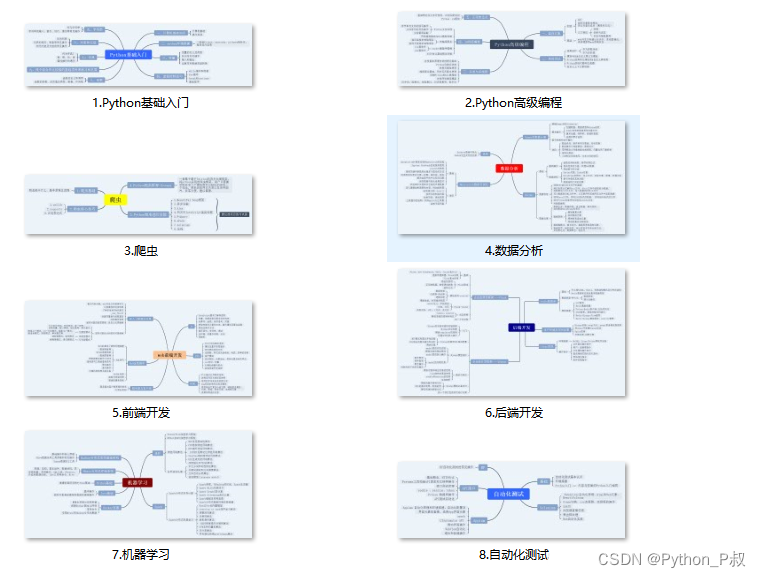
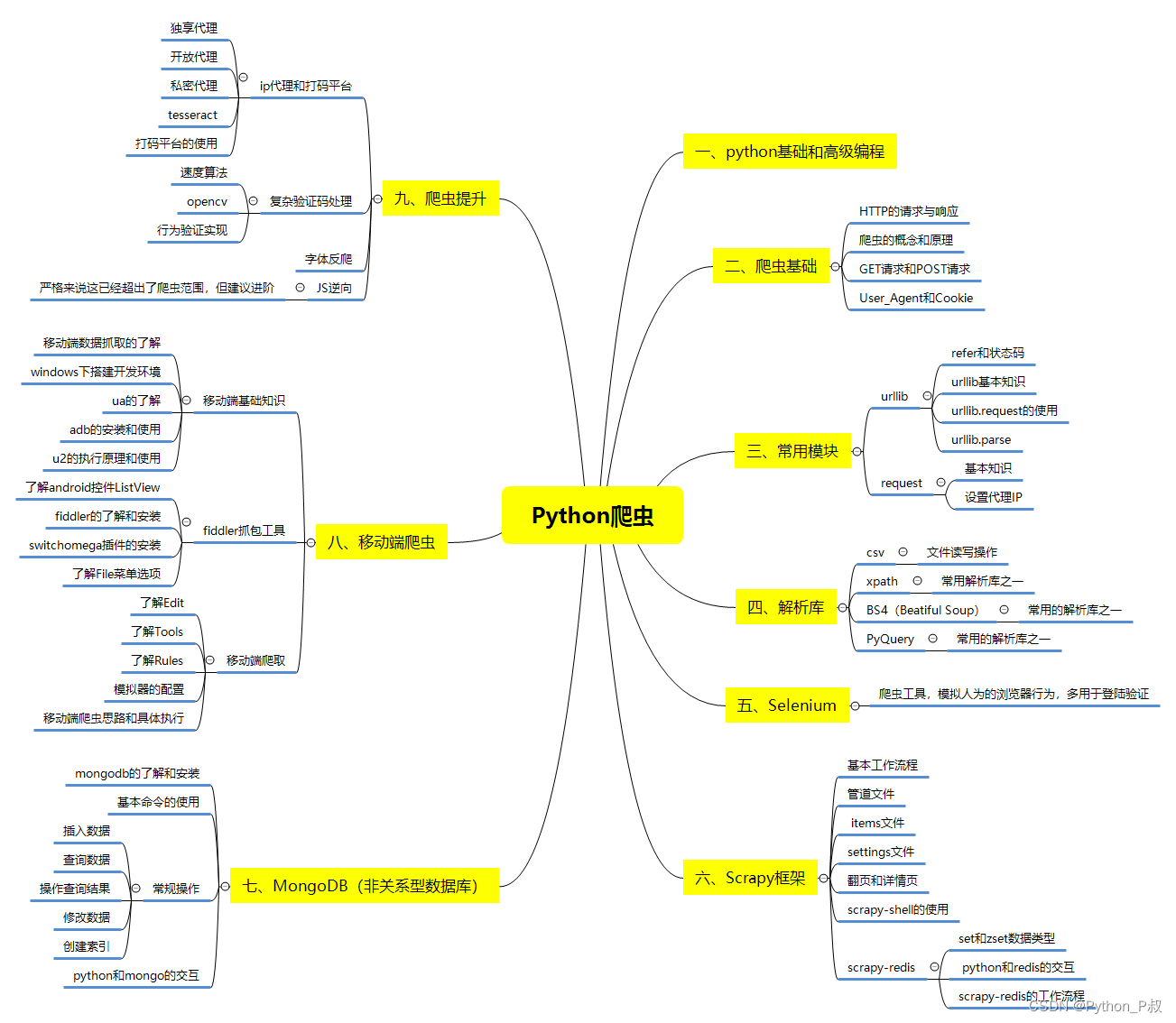
二、Python必备开发工具
工具都帮大家整理好了,安装就可直接上手!
三、最新Python学习笔记
当我学到一定基础,有自己的理解能力的时候,会去阅读一些前辈整理的书籍或者手写的笔记资料,这些笔记详细记载了他们对一些技术点的理解,这些理解是比较独到,可以学到不一样的思路。

四、Python视频合集
观看全面零基础学习视频,看视频学习是最快捷也是最有效果的方式,跟着视频中老师的思路,从基础到深入,还是很容易入门的。

五、实战案例
纸上得来终觉浅,要学会跟着视频一起敲,要动手实操,才能将自己的所学运用到实际当中去,这时候可以搞点实战案例来学习。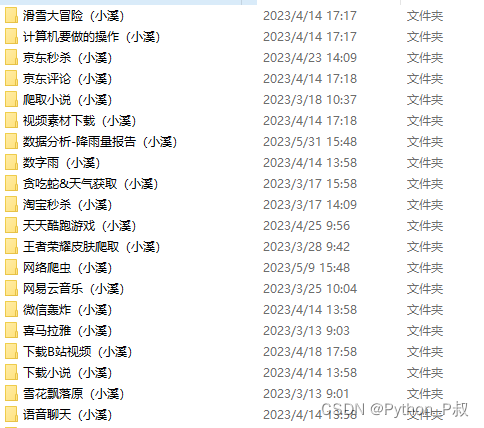
六、面试宝典
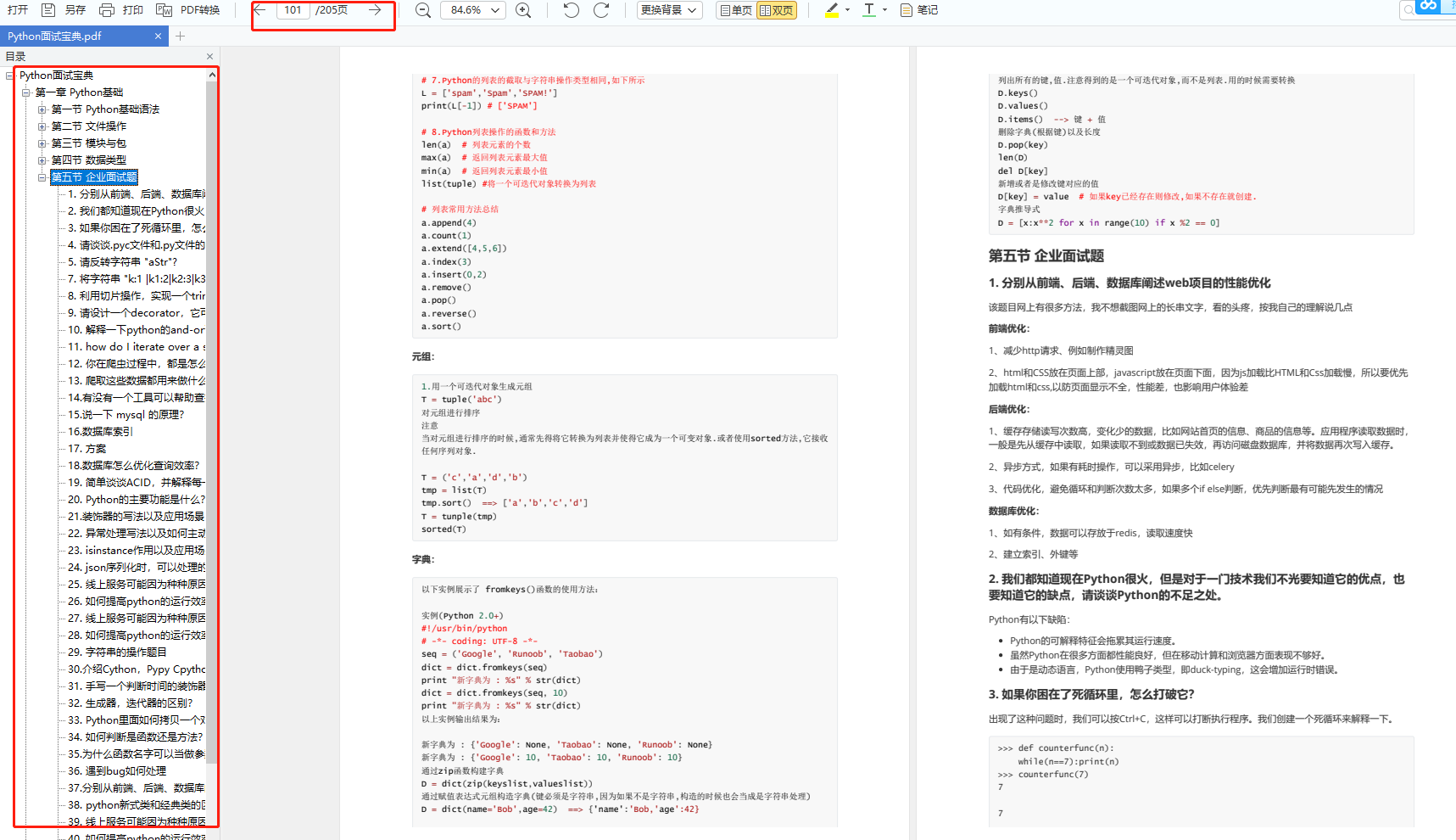

简历模板
👉CSDN大礼包🎁:全网最全《Python学习资料》免费赠送🆓!(安全链接,放心点击)
相关文章:

python进行数据分析:数据预处理
六大数据类型 见python基本功 import numpy as np import pandas as pd数据预处理 缺失值处理 float_data pd.Series([1.2, -3.5, np.nan, 0]) float_data0 1.2 1 -3.5 2 NaN 3 0.0 dtype: float64查看缺失值 float_data.isna()0 False 1 …...

百度Apollo:引领自动驾驶技术的创新与突破
文章目录 前言一、技术创新二、开放合作三、生态建设四、安全可靠性总结 前言 随着科技的迅猛发展,自动驾驶技术正成为未来交通领域的重要发展方向。在这个领域中,百度Apollo作为中国领先的自动驾驶平台,以其卓越的创新能力和开放合作精神&a…...

Python爬虫 异步、缓存技巧
在进行大规模数据抓取时,Python爬虫的速度和效率是至关重要的。本文将介绍如何通过异步请求、缓存和代理池等技巧来优化Python爬虫的速度和性能。我们提供了实用的方案和代码示例,帮助你加速数据抓取过程,提高爬虫的效率。 使用异步请求、缓…...
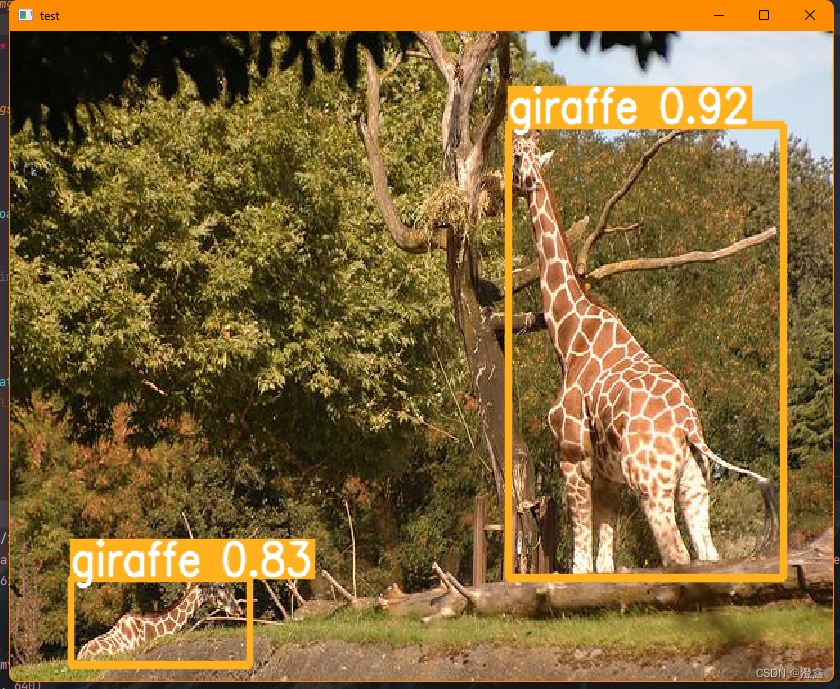
YOLOv5屏蔽区域检测(选择区域检测)
YOLOv5屏蔽区域检测以及选择区域检测 前期准备labelme选择mask区域 代码改动 前期准备 思路就是通过一个mask掩膜,对我们想要屏蔽或者选择的区域进行遮挡处理,在推理的时候,将有mask掩膜的图像输入,将最后的结果显示在原始图像上…...
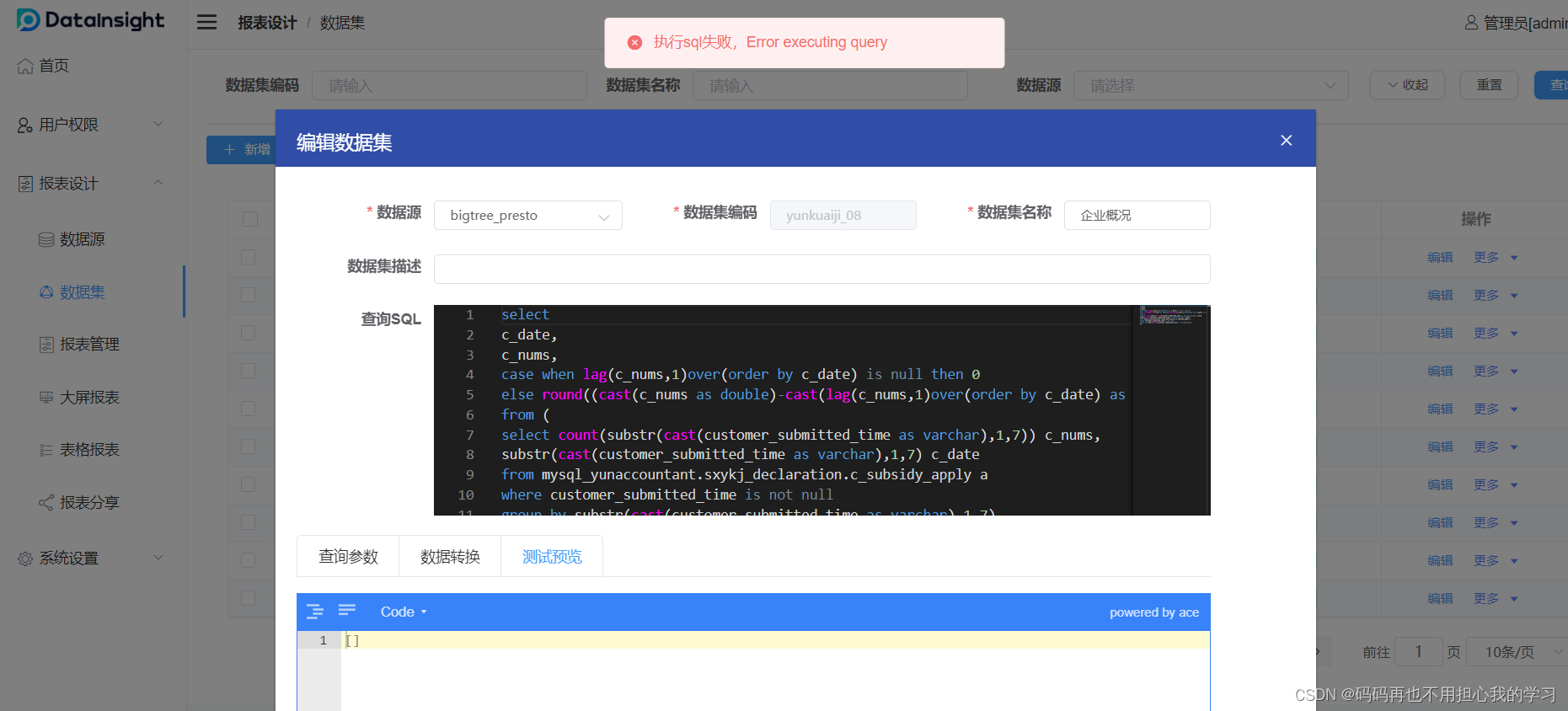
记录一次presto sql执行报错 Error executing query的解决办法
在执行presto sql 时报错截图如下: 查看后台执行报错日志: java.sql.SQLException: Error executing query at com.facebook.presto.jdbc.PrestoStatement.internalExecute(PrestoStatement.java:307) at com.facebook.presto.jdbc.PrestoStatement.exe…...

Android Studio开发之路 (五)导入OpenCV以及报错解决
一、步骤 官网下载opencv包(我下的是4.7.0)并解压,openvc官网 先创建一个空项目,简单跑一下能正常输出helloworld 点击file->new->Import Module选择解压之后的opencv-android-sdk文件夹中的SDk文件夹, modu…...

vue3.3中ref和reactive原理源代码分析
源码是ts编写的,这里部分简化成js便于阅读 function ref(value) {return createRef(value, false) }function createRef(rawValue, shallow) { //shallow是否是浅层定义数据,用于区别ref和shallowRefif (isRef(rawValue)) {//如果已经是ref直接返回源数据return rawValue}retu…...

10.Oracle中decode函数
【函数格式】: decode ( expression, condition_01, result_01, condition_02, result_02, ......, condition_n, result_n, result_default) 【函数说明】: 若表达式expression值与condition_01值匹配,则返回result_01,…...
)
Podman安装部署kafka和管理界面(快速跑起来)
#1.拉取镜像 podman pull bitnami/zookeeper podman pull bitnami/kafka#2.创建子网 podman network create knet#3.创建zookeeper podman run -itd --name zookeeper-server -p 2181:2181 \ --net knet \ -e ALLOW_ANONYMOUS_LOGINyes \ bitnami/zookeeper:latest#3.1查看z…...

Hbase文档--架构体系
阿丹: 基础概念了解之后了解目标知识的架构体系,就能事半功倍。 架构体系 关键组件介绍: HBase – Hadoop Database,是一个高可靠性、高性能、面向列、可伸缩的分布式存储系统,利用HBase技术可在廉价PC Server上搭建起…...

stm32基于HAL库驱动外部SPI flash制作虚拟U盘
stm32基于HAL库驱动外部SPI flash制作虚拟U盘 📌参考文章:https://xiaozhuanlan.com/topic/6058234791🎞实现效果演示: 🔖上图中的读到的FLASH_ID所指的是针对不同容量,所对应的ID。 //W25X/Q不同容量对应…...

vue3-ts- element-plus新增组件-过滤
新增组件-所有值为空时过滤 <el-form-item label"家庭成员"><divclass"username-box"v-for"(item, index) in form.namelist":key"index"><div>姓名:<el-input v-model"item.name" placeho…...

PostgreSQL SQL优化
Oracle SQL优化 一、在字段里面写的子查询放到from后面,用left join,会大幅提高SQL查询速度。 一、在字段里面写的子查询放到from后面,用left join,会大幅提高SQL查询速度。...

debian12网络静态ip配置-OSSIM 安全漏洞扫描系统平台
本配置适合于服务器上的静态ip配置,该方法简单可靠。 1 临时配置 ifconfig eth0 192.168.1.97 netmask 255.255.255.0 broadcast 192.168.1.255 ip route add default via 192.168.1.1 2 主要的网络配置文件 /etc/network/interfaces /etc/resolv.conf 3 配置…...
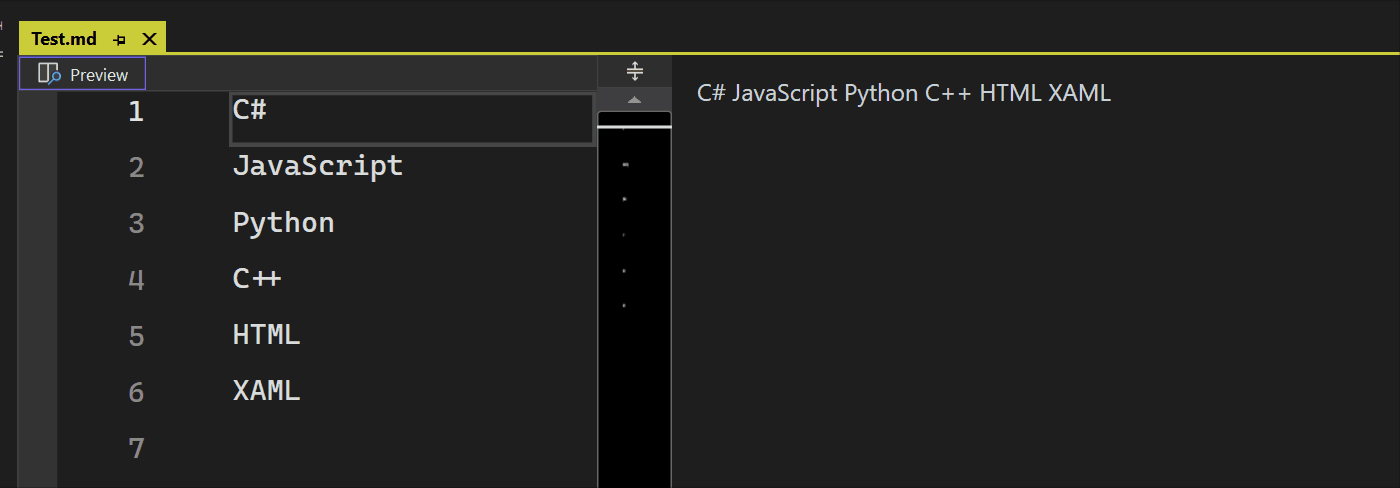
微软 Visual Studio 现已内置 Markdown 编辑器,可直接修改预览 .md 文件
Visual Studio Code V1.66.0 中文版 大小:75.30 MB类别:文字处理 本地下载 Markdown 是一种轻量级标记语言,当开发者想要格式化代码但又不想牺牲易读性时,Markdown 是一个很好的解决方案,比如 GitHub 就使用 Markdo…...

阿里云通义千问开源第二波!大规模视觉语言模型Qwen-VL上线魔搭社区
通义千问开源第二波!8月25日消息,阿里云推出大规模视觉语言模型Qwen-VL,一步到位、直接开源。Qwen-VL以通义千问70亿参数模型Qwen-7B为基座语言模型研发,支持图文输入,具备多模态信息理解能力。在主流的多模态任务评测…...
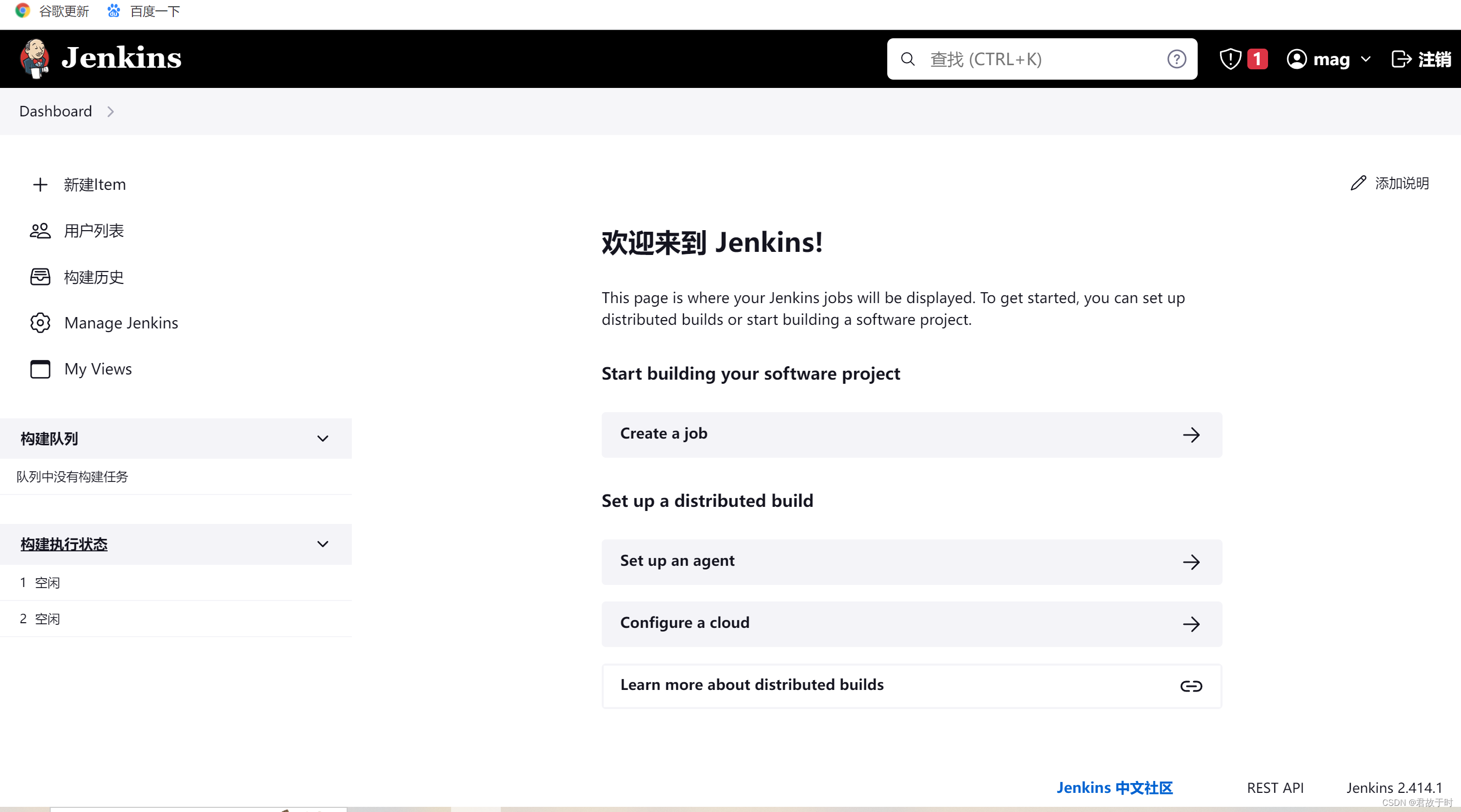
在腾讯云服务器OpenCLoudOS系统中安装Jenkins(有图详解)
Jenkins介绍 Jenkins是一个开源软件项目,是基于java开发的一种持续集成工具,用于监控持续重复的工作,旨在提供一个开放易用的软件平台,使软件的持续集成变成可能。 将项目代码的svn地址配置在Jenkins,就可以直接在Je…...

《vue3实战》在created生命周期中运用slice()方法结合element plus组件实现电影评价系统的分页
目录 前言 电影评价系统的分页是什么?它具体的作用体现在哪些方面? 一、slice的含义、语法和作用以及created的作用 slice是什么?slice有什么语法?slice的作用体现在哪些方面? created生命周期的作用:…...

NO.04 MyBatis的各种查询功能
目录 1、查询一个实体类对象 2、查询一个List集合 3、查询单个数据 5、查询多条数据并存储在Map集合中 5.1 方法一:将数据存储在map集合中,再将map集合存储在List集合中 5.2 方法二:将数据存储在map集合中 6、MyBatis中为Java中常用的…...
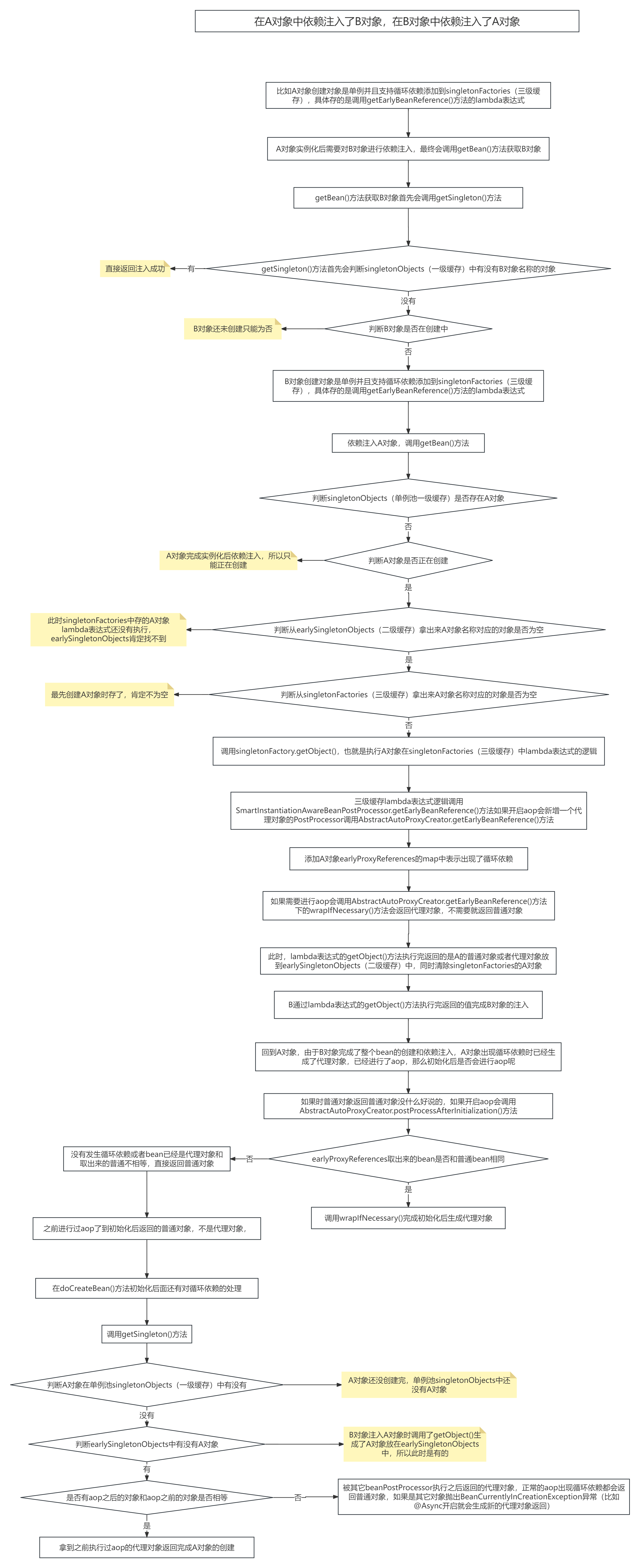
Spring循环依赖
一、Autowired依赖注入的缓存 二、Resource依赖注入过程 三、循环依赖 singletonObjects:缓存经过了完整生命周期的beanearlySingletonObjects:缓存未经过完整生命周期的bean,如果某个bean出现了循环依赖,就会提前把这个暂时未经过…...

龙虎榜——20250610
上证指数放量收阴线,个股多数下跌,盘中受消息影响大幅波动。 深证指数放量收阴线形成顶分型,指数短线有调整的需求,大概需要一两天。 2025年6月10日龙虎榜行业方向分析 1. 金融科技 代表标的:御银股份、雄帝科技 驱动…...
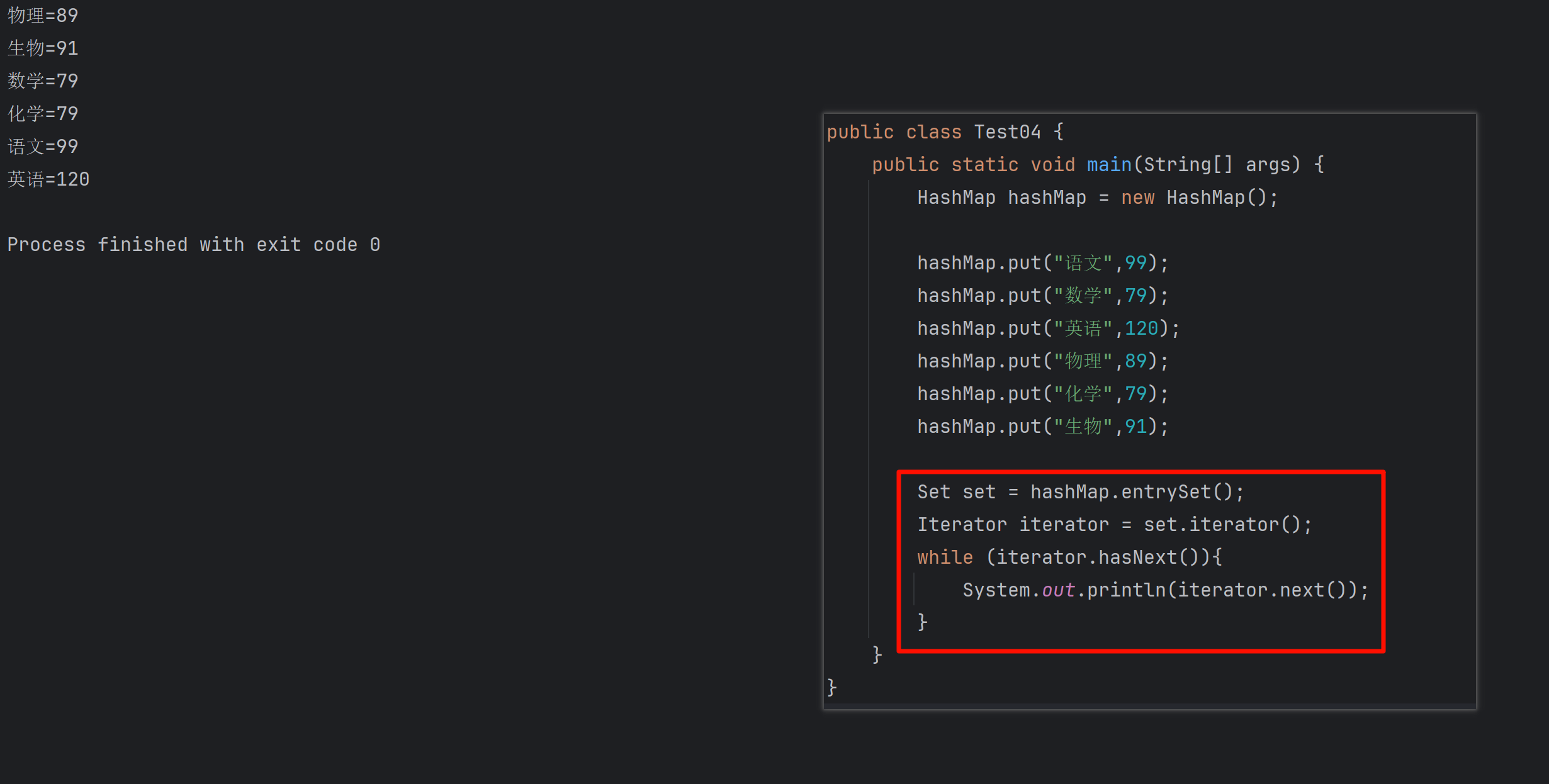
遍历 Map 类型集合的方法汇总
1 方法一 先用方法 keySet() 获取集合中的所有键。再通过 gey(key) 方法用对应键获取值 import java.util.HashMap; import java.util.Set;public class Test {public static void main(String[] args) {HashMap hashMap new HashMap();hashMap.put("语文",99);has…...
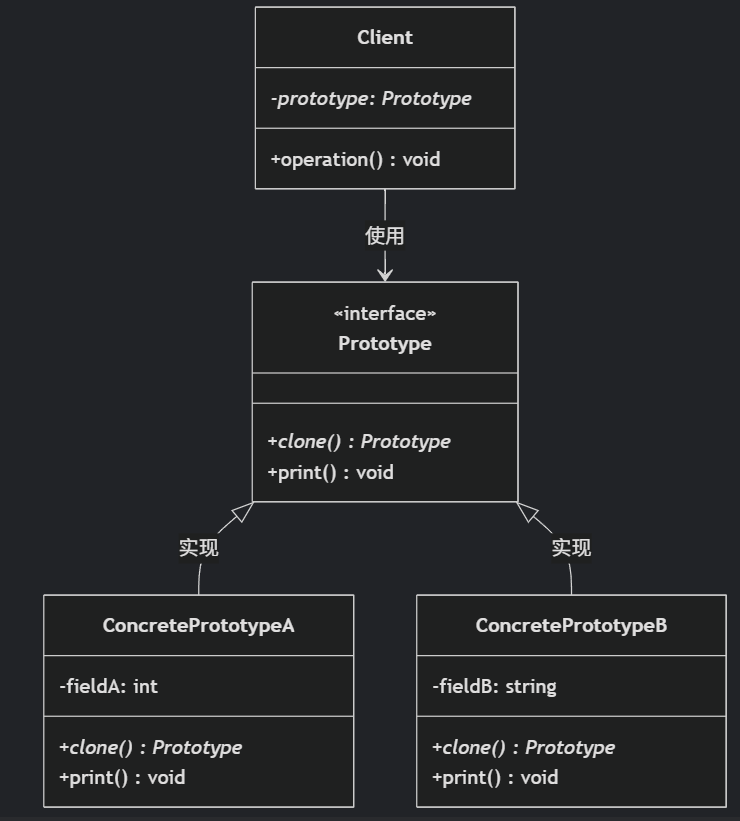
(二)原型模式
原型的功能是将一个已经存在的对象作为源目标,其余对象都是通过这个源目标创建。发挥复制的作用就是原型模式的核心思想。 一、源型模式的定义 原型模式是指第二次创建对象可以通过复制已经存在的原型对象来实现,忽略对象创建过程中的其它细节。 📌 核心特点: 避免重复初…...

Java 加密常用的各种算法及其选择
在数字化时代,数据安全至关重要,Java 作为广泛应用的编程语言,提供了丰富的加密算法来保障数据的保密性、完整性和真实性。了解这些常用加密算法及其适用场景,有助于开发者在不同的业务需求中做出正确的选择。 一、对称加密算法…...
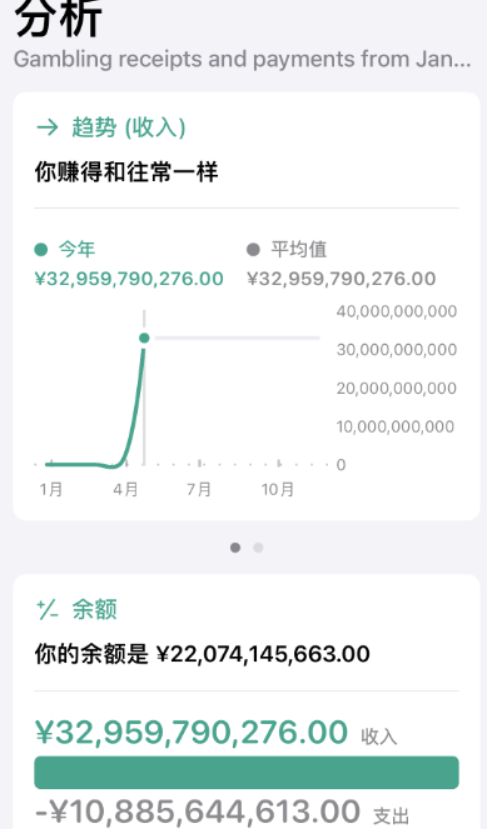
2025盘古石杯决赛【手机取证】
前言 第三届盘古石杯国际电子数据取证大赛决赛 最后一题没有解出来,实在找不到,希望有大佬教一下我。 还有就会议时间,我感觉不是图片时间,因为在电脑看到是其他时间用老会议系统开的会。 手机取证 1、分析鸿蒙手机检材&#x…...
)
GitHub 趋势日报 (2025年06月08日)
📊 由 TrendForge 系统生成 | 🌐 https://trendforge.devlive.org/ 🌐 本日报中的项目描述已自动翻译为中文 📈 今日获星趋势图 今日获星趋势图 884 cognee 566 dify 414 HumanSystemOptimization 414 omni-tools 321 note-gen …...

【Oracle】分区表
个人主页:Guiat 归属专栏:Oracle 文章目录 1. 分区表基础概述1.1 分区表的概念与优势1.2 分区类型概览1.3 分区表的工作原理 2. 范围分区 (RANGE Partitioning)2.1 基础范围分区2.1.1 按日期范围分区2.1.2 按数值范围分区 2.2 间隔分区 (INTERVAL Partit…...

CSS设置元素的宽度根据其内容自动调整
width: fit-content 是 CSS 中的一个属性值,用于设置元素的宽度根据其内容自动调整,确保宽度刚好容纳内容而不会超出。 效果对比 默认情况(width: auto): 块级元素(如 <div>)会占满父容器…...
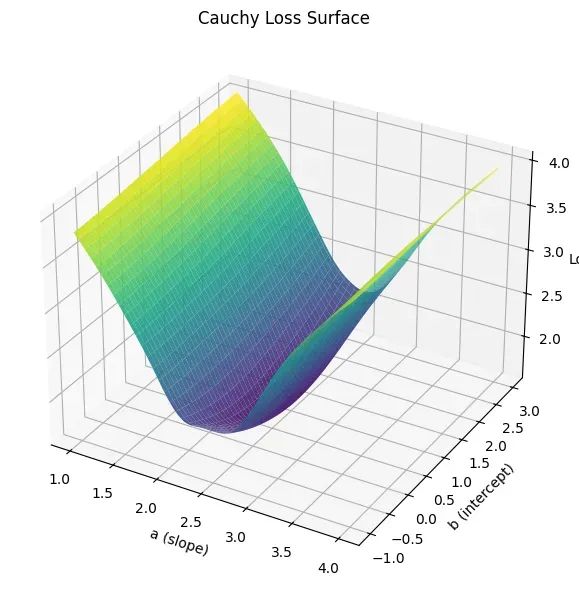
让回归模型不再被异常值“带跑偏“,MSE和Cauchy损失函数在噪声数据环境下的实战对比
在机器学习的回归分析中,损失函数的选择对模型性能具有决定性影响。均方误差(MSE)作为经典的损失函数,在处理干净数据时表现优异,但在面对包含异常值的噪声数据时,其对大误差的二次惩罚机制往往导致模型参数…...

使用SSE解决获取状态不一致问题
使用SSE解决获取状态不一致问题 1. 问题描述2. SSE介绍2.1 SSE 的工作原理2.2 SSE 的事件格式规范2.3 SSE与其他技术对比2.4 SSE 的优缺点 3. 实战代码 1. 问题描述 目前做的一个功能是上传多个文件,这个上传文件是整体功能的一部分,文件在上传的过程中…...
